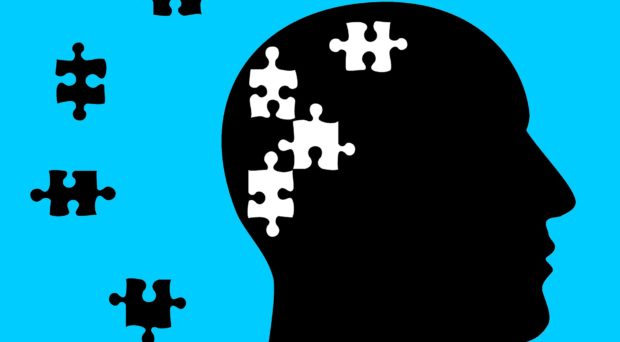
为了使曲线弄平并促进新型冠状病毒(Covid-19)的遏制,已经制定了安全预防措施,包括待在家里的措施。但是,诸如医疗保健支持人员,公共汽车司机和卫生工人的几名成员被称为“必不可少的”工人,被认为免于此类政策;超过90%的收入百分位数的工人没有能力在家工作。[1]除了在19日期间与服务相关的心理健康挑战外,基本的有色工人的经历使最近对黑体的结构性暴力行为变得复杂,这是种族主义大流行的缩影,使美国困扰了400年。因此,值得在认同背景下对Covid-19期间基本工人的心理健康挑战和压力源进行讨论。
How Race and Class Complicate the Mental Health Challenges Faced by Essential Workers during COVID-19
It is critical to highlight the intersectionality of race and class, and how people of color are disproportionately represented in low-wage, high-risk occupations deemed essential. Over 53 million workers aged 18 to 64 in the U.S. have median annual earnings of $17,950, and both Black and Latinx workers are overrepresented in these low-waged positions.[2]Over 6.5 million U.S. healthcare support workers, including home health aides, medical assistants, and technicians earn less than the national median wage and also often lack basic workplace benefits.[3]更具体地说,这些的50%以上workers do not have paid sick leave and over 75% of them do not have access to paid personal leave.[4]Thus, in spite of the fear of risking their lives and the health of their family, these members of the workforce continue to report to work just to survive.
Essential workers are also often low-waged people of color[5]whose duties require them to be in close physical proximity with others.[6],[7]例如,养老院员工的中位数为护理助理的中位数为29,640美元,[8]work in spaces that have been devastated by COVID-19.[9]结果,这些重要的工人目睹了他们的老年患者生病,没有时间去世,因为仅限于带薪休假或病假。同样,在Covid-19患者占用的医院的医院环境服务工作者以及处理每个人垃圾的卫生工人,每天都会面临新的风险,而获得个人保护设备(PPE)或手动卫生设备。[10]Their work is saving lives, but the public rarely recognizes the importance and hardship of their work during the pandemic.
新兴数据表明,低熟人的工人正在为压力,倦怠,噩梦和失眠而苦苦挣扎。[11]Facing stressful situations on a daily basis not only causes mental health problems (e.g., depression, anxiety, post-traumatic stress disorders),[12]而且还身体健康问题(例如,高血压,心血管疾病)。[13]We however know much less about the status of mental health and wellbeing of low-wage, high-risk essential workers compared to higher-paid, licensed healthcare providers before and during the pandemic. Similarly, there is increasing evidence that COVID-19 is not the great equalizer; on the contrary, the racial/ethnic disparities observed in other health outcomes is also made evident in the current pandemic.[14]Consequently, low-waged essential workers of color are experiencing a disproportionate level of death and grief not only over clients, patients, and customers, but also over family members, friends, and other loved ones.
政策和实践建议
As mental health clinicians and public health researchers, we propose the following recommendations:
扩大和多样化心理健康劳动力。全国性的精神卫生工作者短缺在这一大流行开始之前存在,预计在未来五年内将变得更糟。[15]作为基本工人的心理健康,他们实际上必须能够获得所需的心理保健。因此,应将财政资源用于扩大心理健康专业人员的数量。特别需要使心理保健劳动力多样化。有很强的文献支持需要增加种族/族裔少数群体提供者比例,以此作为促进在治疗关系中信任,文化和语言上有能力的护理的手段。[16]因此,将联邦资金献给多样化的心理保健劳动力的招募和保留是解决低收入有色人种的急性和慢性心理健康需求的关键政策建议,并减少了健康差异。
Strengthening Employee Assistance Programs.Current resources, although much needed and helpful, tend to focus on mental health and well-being of clinicians.[17]Practical resources for healthcare support workers and non-healthcare essential workers are hard to find. Cost and stigma are the top barriers to mental health care access.[18]Employers and leadership should assess the mental health needs of employees, normalize help-seeking behavior, and expand access to free and confidential support and resources for their employees. Additionally, open dialogue about mental health will help lessen stigma towards mental disorders. This pandemic may be a turning point where we talk about mental health openly enough so people feel as comfortable seeking treatment for mental health and substance use concerns as they do for any other common health condition.
Utilization of peer-support systems.健康care organizations and leadership should consider creating and/or amplifying a peer-support system at work.[19]Peer support is a crucial element in meeting the increased needs of vulnerable essential workers. In order to help increase access and encourage use of mental health services, Mental Health First Aid (MHFA) training should be given to as many people as possible. Non-clinical professionals use MHFA to encourage help seeking behavior and identify signs of distress and mental health conditions. Expanding MHFA training to these essential workers can help reduce suicides and to make sure that they seek the care they are certain to need.15
We can anticipate a greater need for mental health services for essential workers—a need that will last beyond the duration of the current public health crisis. Taking care of people who have served us throughout this pandemic must be our top priority.
References
[1] U.S. Bureau of Labor Statistics. Economic News Release. Table 1. Workers who could work at home, did work at home, and were paid for work at home, by selected characteristics, averages for the period 2017-2018. 2019. Available athttps://www.bls.gov/news.release/flex2.t01.htmAccessed May 4, 2020.
[2] Ross, M. & Bateman, N. Meet the low-wage workforce. 2019. Available athttps://www.brookings.edu/research/meet-the-low-wage-wortforce/2020年5月4日访问,
[3]美国劳工统计局。Occupational Employment Statistics. Occupational Employment and Wages, May 2019. 31-0000 Healthcare Support Occupations (Major Group). 2020. Available athttps://www.bls.gov/oes/current/oes310000.htmAccessed May 4, 2020.
[4]美国劳工统计局。员工福利调查。2018年。2020年5月4日访问。https://www.bls.gov/ncs/ebs/benefits/2018/
[5]Centers for Disease Control and Prevention. Coronavirus Disease 2019 (COVID-19). COVID-19 in Racial and Ethnic Minority Groups. 2020.https://www.cdc.gov/coronavirus/2019-ncov/need-extra-precautions/racial-ethnic-minorities.htmlAccessed May 4, 2020.
[6]莱文森·M(Levenson M.纽约时报。2020年https://www.nytimes.com/2020/04/04/us/detroit-bus-driver-coronavirus.html。Accessed May 4, 2020.
[7]Bhattarai A. ‘It feels like a war zone’: As more of them die, grocery workers increasingly fear showing up at work.华盛顿邮报。2020年https://www.washingtonpost.com/business/2020/04/12/grocery-worker-fear-death-coronavirus/Accessed May 4, 2020.
[8]美国劳工统计局。Occupational outlook handbook: nursing assistants and orderlies. 2019. Available athttps://www.bls.gov/ooh/healthcare/nursing-assistants.htm#:~: text = Thext.the%20Median%20Annual%20Wage%20Wage%20FOR,WAS%20%2428%2C980%2C980%20%20IN%20IN%20IN%20May%20201920192020年6月15日访问。
[9]您的KK,Lai R,Ivory D.美国所有冠状病毒死亡人数中有三分之一是疗养院居民或工人。2020年https://www.nytimes.com/interactive/2020/05/09/us/coronavirus-cases-nursing-homes-us.html。Accessed June 20, 2020.
[10]Ducharme J. ‘No One Mentions the People Who Clean It Up’: What It’s Like to Clean Professionally During the COVID-19 Outbreak.时间。2020年https://time.com/5810911/covid-19-cleaners-janitors/Accessed May 4, 2020.
[11]Hammonds C, Kerrissey J. “We are not heroes because it is not a choice”: a survey of essential workers’ safety and security during COVID-19. 2020. Available athttps://www.umass.edu/lrrc/sites/default/files/Western%20Mass%20Essential%20Worker%20Survey%20-%20May%202020.pdf2020年6月15日访问。
[12]杰克逊JS,骑士KM,拉弗蒂JA。种族和不健康的行为:慢性压力,HPA轴以及生活过程中的身心健康差异。Am J公共卫生。2010; 100:933-939。
[13]Sturgeon JA,Arewasikporn A,Okun MA。财务压力的心理社会背景:对炎症和心理健康的影响。Psychosom Med。2016; 78(2):134-143。
[14]Webb Hooper M, Nápoles AM, Pérez-Stable EJ. COVID-19 and racial/ethnic disparities.JAMA.于2020年5月11日在线发布。
[15]US Department of Health and Human Services. National projections of supply and demand for selected behavioral health practitioners: 2013–2025. 2016. Available athttps://bhw.hrsa.gov/sites/default/files/bhw/health-workforce-analysis/research/projections/behavioral-health2013-2025.pdf2020年5月21日访问。
[16]McGuire TG,MirandaJ。关于心理健康中种族和种族差异的新证据:政策的影响。卫生事务。2008;27(2):393-403.
[17]Shapiro J, Galowitz P. Peer support for clinicians: a programmatic approach. Acad Med. 2016;91(9):1200-1204.
[18]Budhwani H, De P. Perceived stigma in health care settings and the physical and mental health of people of color in the United States。卫生公平。2019; 3(1):73-80。
[19]Hammerback K,Hannon PA,Harris Jr。低薪行业员工的工作场所健康促进的观点。Am J Health促进。2015; 29(6):384-392。
Comments